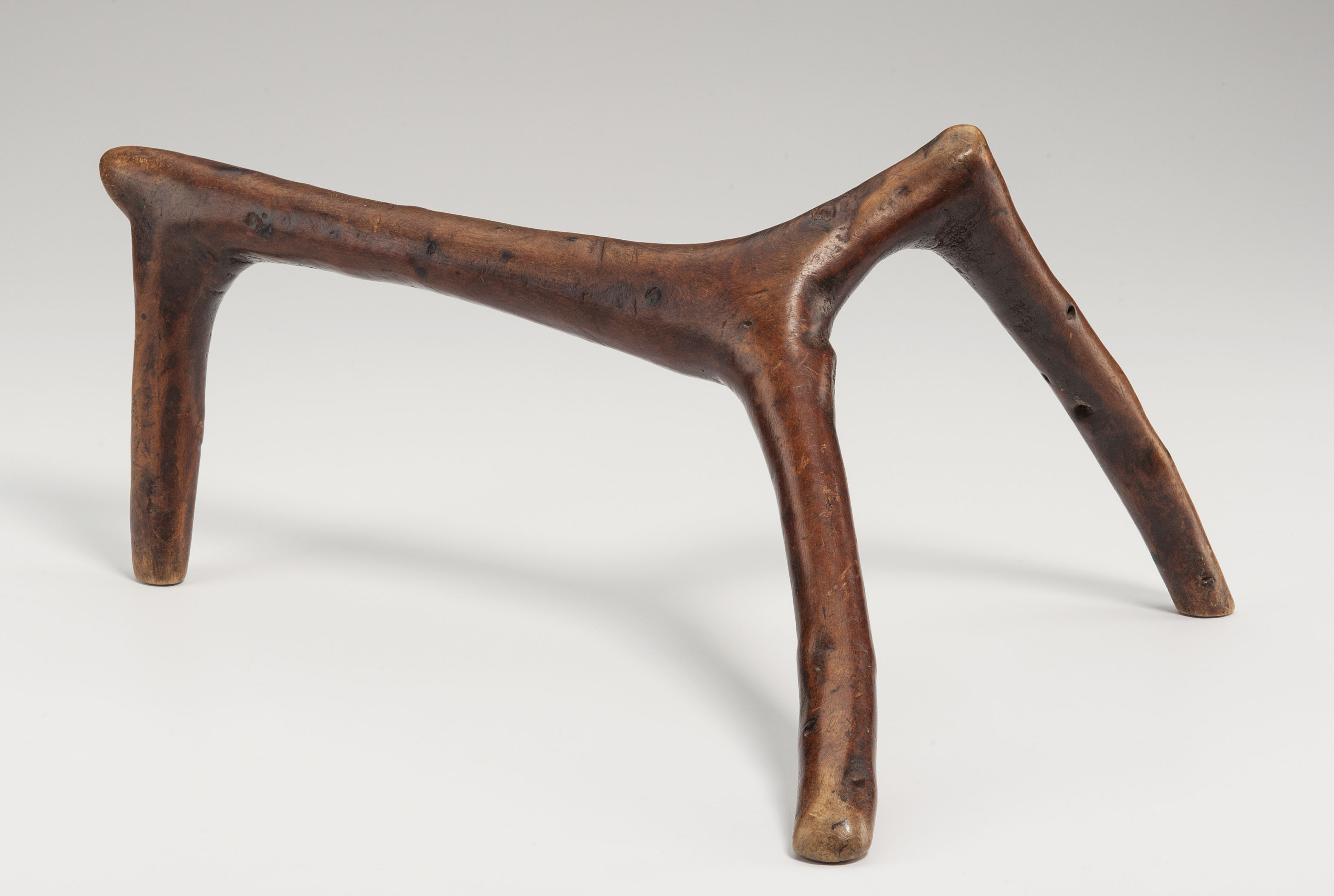On February 26th Indiana University Art Museum will be opening a special exhibition on a large collection of traditional artwork from Kenya that the museum purchased last year. This collection positions IU as the premier art museum in the United States for research in traditional Kenyan visual arts. We are excited to present four pieces from this collection in DailyArt and show them every Sunday until February 28th. Before this we rarely featured African Art in DailyArt and that's a huge mistake! Enjoy :) Headrests and stools are portable objects traditionally used by men in many parts of Kenya and East Africa. Particularly among pastoral peoples, wooden headrests, sometimes referred to as “pillows,” support the head while a man is sleeping, often keeping intact very elaborate hairdos. While the use of both headrests and stools has declined as people adopt more Western-styles of furniture, they may still be seen in some rural areas. While some forms are distinctly either a stool or a headrest, others are used interchangeably, so sometimes, as in this example, it’s difficult to know whether one or the other was intended. This headrest/stool could be considered “found art.” A man carefully chose a branch or root that presented both the horizontal area needed for sitting or supporting the head while sleeping as well as three offshoots that could become legs. Bark was stripped off, the wood smoothed—and the object was complete. The beautifully worn and glossy surface is the result of much use and handling and greatly enhances the form. Rendile are a pastoral people living in northern Kenya. Being camel herders, they traditionally move several times a year so that their animals have adequate food and water. As a result, possessions tend to be few in number, light, durable, and easily transportable.




Headrest/Stool
wood • 19.7 x 43.5 cm
 Unknown Artist
Unknown Artist